Lawn Pests
Protect against Common Lawn Pests
If a brown lawn is causing you to see red, you’re not alone. Kendall Lawn Care has helped countless homeowners in southern Ontario fight back against common lawn pests such as grub, chinch bug and leatherjackets to name just a few. Use the information below to determine what’s plaguing your property and get in touch with us to correct the problem!
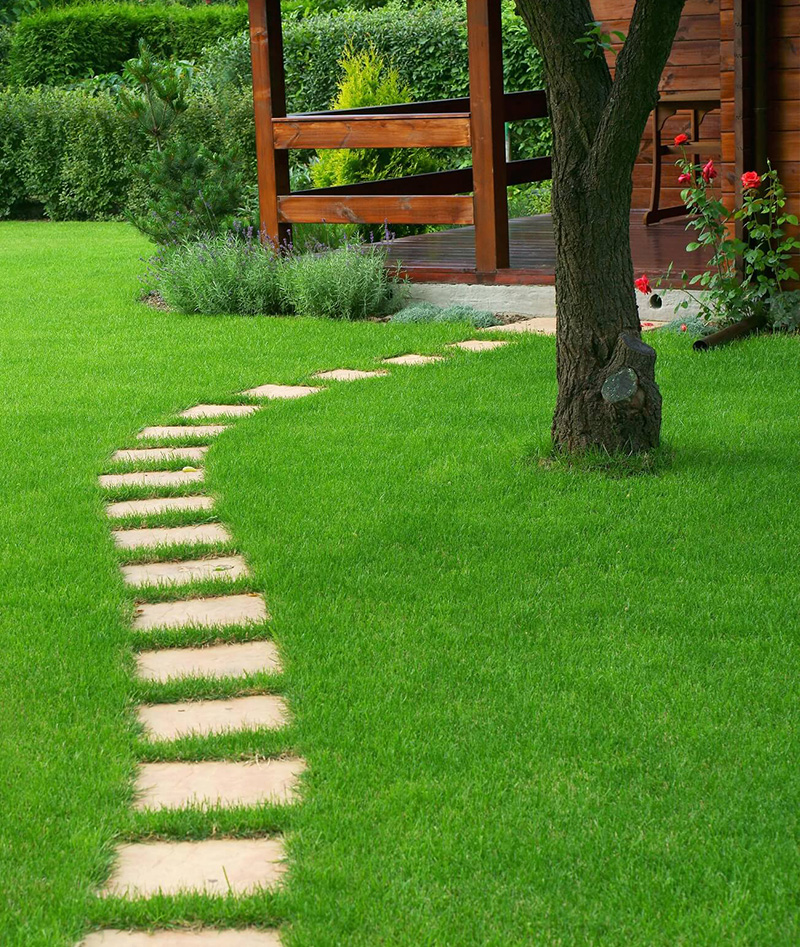
European Chafer Grub
Although there are several different types of grub that can cause damage in this area, the most devastating grub recently has been the European Chafer Grub. The larvae (grub) live below the surface of the soil and feed off the roots of the grass. As the grass begins to die it will feel spongy to walk on and roll up easily as the roots are no longer attached to the soil. Other signs that grubs are present include skunks, raccoons, and birds, digging up the lawn to feed.
Life Cycle
These grubs complete their life cycle in one year surviving as larvae in the soil over winter. As the soil warms up in the spring, the larvae return to the surface where they wait to pupate into the European Chafer beetle, which looks similar to a June beetle except it is smaller and tan in colour. In mid- to late June, the beetles come out of the soil and fly to trees and shrubs where they mate. These adults are active for two to three weeks and during this time the female can deposit 25 to 50 eggs in a lawn. The larvae hatch in mid to late July and feed on the grass crowns and roots until late fall. The mature grub moves down into the soil as it freezes and will return to the surface in early April.
Control
The best time to control the grubs are from mid-August through mid-September using nematodes. For best results, the lawn should be kept moist during this period to increase the mobility of the nematodes used as part of the treatment. Call Kendall Lawn Care for help.
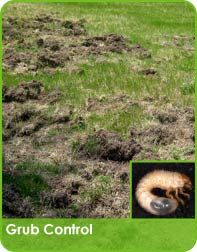
Chinch Bugs
Chinch bugs live on the surface of the soil and feed on grass. They pierce the grass blade, stem or crown, inject toxic saliva, then suck the sap out of the plant. A lawn damaged by chinch bugs will have a patchy, brown, sunken appearance. Damage looks similar to the dormancy caused by drought but watering does not bring the grass back to its normal green condition. These insects are blood-red as nymphs, red and black with a white stripe across their back as adolescents, and black and white with wings as adults. They are very tiny. Chinch bugs actively feed on lawns during the hottest part of the summer and can cause serious damage in a few days and devastate an entire lawn in a few weeks.
Life Cycle
Chinch bugs survive the winter as adults, seeking shelter from cold and snow under hedges, shrubs and leaves. In late spring they come out of hiding to mate and lay eggs. Each adult female lays about 250 eggs, which hatch after about three weeks. When the eggs hatch the young nymphs begin feeding and cause noticeable damage immediately. After the first generation, it is possible that two or more generations will be born and mature each year.
Control
It is very important to diagnose and control Chinch bugs quickly. Call Kendall Lawn Care as soon as you notice a problem and we will accurately diagnose it, provide a quote, and treat the condition before it gets any worse.
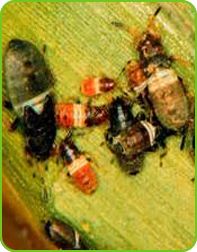
Leatherjackets & Crane Flies
Leatherjackets are best controlled in late fall. They feed during the day at or below the surface on the roots and seedlings of your lawn. The damage to the lawn will first appear as brown patches that soon become bare if infestations are heavy. The insect is most visible on damp, warm nights when they feed on grass blades and stems at the soil surface. They will also be found on driveways and walks early in the morning after a rain.
Life Cycle
The adult crane fly looks like a giant mosquito and appears in late summer. The female lays black eggs in the grass or soil and the eggs hatch within two weeks and the larvae begin to feed. They feed from September until the soil starts to freeze. During the colder periods of winter, they burrow deep into the soil. As the temperatures rises in the spring, they will ascend to just below the soil surface and resume feeding until late May.
Control
Leatherjackets are best controlled in late fall. Contact Kendall Lawn Care for proper diagnosis and control options.
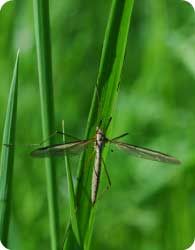
Sod Webworm
Sod Webworm larvae are surface feeders that burrow in the thatch layer of lawns. They line their tunnels with a silk-like material that looks like little cobwebs on the surface of the lawn. The adults are small tan moths. They often fly out of the grass when it is being mowed or when they are disturbed. The adult moths will be seen about three weeks before any damage appears.
Life Cycle
The adults emerge by late May or early June and lay their eggs throughout the lawn. When the larvae emerge from the egg they begin feeding immediately. Damage is caused by the larvae chewing off the grass stems and leaves. The dead patches of grass will pull away easily in clumps revealing masses of silk-like material with green excrement (frass) left by the larvae.
Control
The best time to treat sod webworm is when they are young and actively feeding. By early fall they begin to transform into adults and become very difficult to control. It is possible to have two generations born and mature in the same season. If you notice a lot of moths or webs in your lawn accompanied with dead areas, contact Kendall Lawn Care for an accurate diagnosis and treatment.
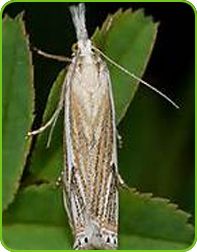
Crabgrass
Crabgrass is a grass, not a weed. Therefore, it is not controlled by traditional weed control. This is a very invasive grass that starts to germinate in late spring. A light green shade, it grows in direct sun, usually where the turf is thin or along the edges of drives or walkways. It spreads rapidly from there. Later in August/ September it will turn purple as it goes to seed and then the mature plant dies when the frost arrives. Unfortunately, the seeds have already been planted in the soil. In the spring, these areas will be muddy dead patches because last year’s plant has died. However, when the soil gets warm enough, the seeds will germinate and the crabgrass takes over more and more of your lawn and chokes out your grass.
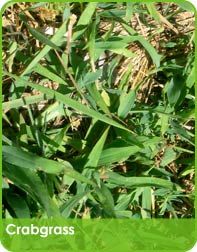

Get a Free Quote
Kendall Lawn Care beautifies our neighbourhoods.

Welcome Home
We maintain healthy, green lawns you’ll be happy to come home to!

Lawn Care 101
Interested in learning more about your lawn? Check out our Knowledge Base.
